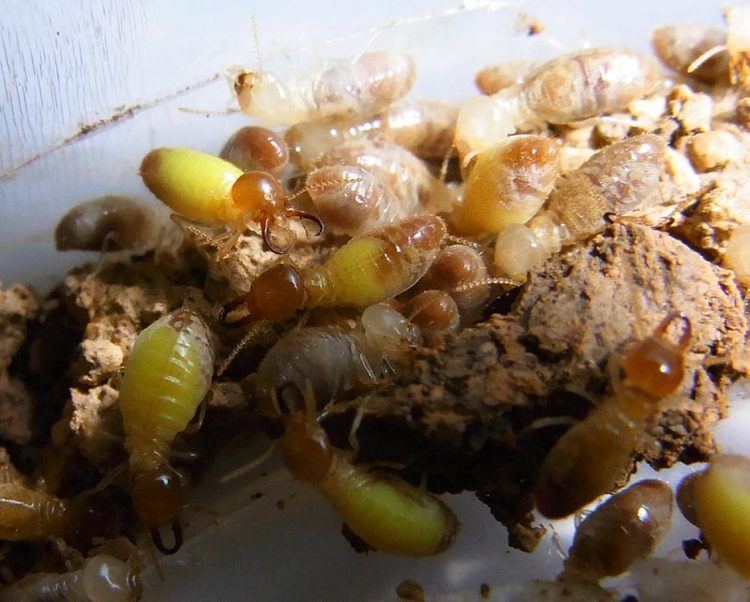Rank Species | Genus Globitermes Order Termite | |
 | ||
Similar Termite, Microcerotermes, Camponotus saundersi, Microtermes, Macrotermes | ||
Globitermes sulphureus
Globitermes sulphureus is a species of termite that is very common in Central and Southern Vietnam and also present in other areas of South East Asia, including Malaysia. They live in nests made of earth that can be up to 1.5m tall and can contain tens of thousands of individuals. Between 5% and 10% of the population are soldier termites which can be recognised by their yellow abdomen and two large, curved mandibles. The termites use autothysis as a defense mechanism.
Contents
- Globitermes sulphureus
- Globitermes sulphureus nest and the forest
- Defense
- Nitrogen fixation
- Foraging
- Control
- References
Globitermes sulphureus nest and the forest
Defense
When the nest is damaged, the soldier termites defend the nest and workers rapidly repair any damage to the nest walls. The soldiers stand on alert on their legs and scan the area with their antennae. If the nest is attacked by ants, for example Oecophylla smaragdina, the workers immediately escape by retreating into the nest, while the soldiers remain outside to defend the nest. They will first attempt to catch and pierce the attackers with their large mandibles. If this does not deter the attackers, some soldiers secrete a yellow liquid from a large gland that occupies a large proportion of their body. The liquid is forced out of the gland by contractions of the mandibular muscles which compress the walls of the gland. This liquid rapidly hardens on contact with air, producing a sticky substance that traps ants and other termites. The secretion also contains a pheromone which attracts more soldiers to fight the attackers. In some cases, the contractions are so violent that the termites rupture themselves. This form of suicidal altruism is known as autothysis.
Nitrogen fixation
G. sulphureus is able to fix nitrogen. An experiment in Thailand found that they fix around 250 grams of nitrogen per hectare per year. Although this contribution is only between 7% and 22% of the total nitrogen inputs in the ecosystem it is thought to be relatively important as termites add it to dead wood, thereby accelerating its decomposition.
Foraging
G. sulphureus forages areas of up to 62m2 and ventures up to 16m away from its nest.
Control
The species is a major pest in areas it inhabits as it attacks wooden structures and can damage coconut and oil palm plantations. Experiments have shown that it can be controlled using the insecticide imidacloprid.
